Today we bring you a complete guide, summarizing all the Sword/Shield block so far so that you can learn something about not only the game itself in its strategy, but also the new mechanics so far, and the which could come in August/September, with the new base expansion.
History of the Pokémon TCG: brief concepts and rules of the game
Victory Conditions
As you know, Pokémon TCG is a card game that has been around since 1996 in Japan and only came to the west in 1999 thanks to the company Wizards of the Coast. The game consists of a deck that has 60 cards, having the various combinations of Pokémon, Trainer and energies that can be composed, and with different strategies of mechanics, and of course, not escaping from the three main possibilities of victory:
Ad
1) Taking all six prize cards in your game;
2) Knocking out the opponent's only defending Pokémon if it doesn't have any on its Bench;
3) By deck out, that is, the depletion of the opponent's deck.
Deck Assembly
So, having said about the winning ways above, let's do a basic deck-building introduction:
1) You can make any combination of cards, as long as they have 60 in total, no matter if you make a rule of 1/3 of each, that is, 20 Pokémon cards, 20 Trainer cards and 20 Energy cards - this is very personal and varies according to the decks and their strategies and proposals;
2) You need to respect the card copy limit, that is, 4 copies of each, starting with the Pokémon.
To be more emphatic: assuming you want to make a “tanker” deck with Snorlax. We have two “baby” Snorlax, the Snorlax VIV 131 and Snorlax PGO 55.
You cannot put 4 of Snorlax VIV 131 and 4 more Snorlax PGO 55. Either it's 4 just from Snorlax VIV 131 or just 4 from Snorlax PGO 55. You could, yes, put 2 Snorlax VIV 131 and 2 Snorlax PGO 55 or 3 Snorlax VIV 131 and 1 Snorlax PGO 55 (or the opposite), but always respecting 4 copies.
“But what about the Snorlax-V?”
That's another name, another classification of Snorlax because it has the suffix V, so it can be added to the deck, in this quick example: 2 Snorlax VIV 131 and 2 Snorlax PGO 55 and 4 more Snorlax V SSH 141.

3) Proceeding with 4-card copies, this applies to all Trainers (either Supporter; items in general - whether usable or Tools; and Stadium) that have the same name.
That is, you may want to put a Stadium card stroke into play, but only 4 copies of each, e.g. 4 copies of Path to the Peak CRE 148, 4 copies of Magma Basin BRS 144 and 4 copies of Training Court RCL 169.
Emphasizing a small detail, the cards “Professor's Research” and “Boss's Orders” have the same issue, but with a catch. Note that, for example, in “Professor's Research” we have several types such as Professor's Research (Professor Oak) CEL 23, Professor's Research BRS 147, Professor's Research SHF 60, Professor's Research (Professor Magnolia) SSH 178. They share the same name as "Professor's Research" although they have different professors' names there such as Oak, Rowan, Juniper, Magnolia. But their names themselves are just aesthetic, and what you consider there is the name “Professor's Research”!

In other words, you can have up to 4 copies of the card and can change arts in total, that is, 3 with Professor Oak's and 1 with Juniper's (totaling 4 copies), but not exceeding the maximum amount of copies, for example, 4 Professor's Research (Professor Oak) CEL 23 and 4 Professor's Research SHF 60.
And the same thing applies with “Boss's Orders”, for the cards Boss's Orders RCL 154, Boss's Orders SHF 58 and Boss's Orders BRS 132. You can have 2 copies with Giovanni and one copy with Cyrus, but you can't have 4 with Giovanni and 4 with Cyrus. They must respect the rule of four copies for the name “Boss's Orders”.
Ad

4) Energies in general have no limit on the amount in the deck, but the special energies do, being only 4 copies of each in the deck.
Deck Types and Archetypes
Like any TCG has its strategy, just like Magic has its own archetypes with deck colors, and Yu-Gi-Oh! with theirs, Pokémon also does not deviate from this principle, with many possibilities. We have decks like:
1) “Basic” deck, that is, the traditional of the traditional: evolve your Pokémon, execute your script to use your supporter, beat your Pokémon against your opponent and get your prizes.
2) Control Deck, taking the general resources of the opponent deck, that is:
- deny using Items, deny energies.
- make them take damage if they attach energies from their hand;
- remove energies from their hand;
- remove energy from their Pokémon with other cards or abilities;
- prevent your opponent's Basic or Evolved Pokémon from dealing damage;
- prevent them from using any Supporter cards on their turn;
- discard cards from opponent's hand, etc.
3) Deck by "spread sniper", that is, spread damage both on the opponent's active Pokémon and at the same time against their bench, making them confused as to where they should prioritize their plays to recover their Pokémon and be able to respond against this threat without losing many Pokémon by multiple knockouts.
4) And the most unusual, deck by "deck out", which simply aims to exhaust the cards in the opponent's deck - as said, something rare to see.
Weaknesses, Resistances and Special Conditions
As in the games, Pokémon have mechanics close to VGC, which have attacks that can be super effective or have resistance to others, such as Fire being super effective against Plant, but being weak against Water.
So, the TCG enables the doubled weakness for those Pokémon to take damage at the end of the attack's declaration, i.e. if a Charizard does 300 base damage against a plant Pokémon, it becomes 600 damage. And there are Tools that can triple weaknesses, like the Supereffective Glasses ASR 152 (but this is an exception).
About resistances, Pokémon take 30 less damage for the total damage of the opponent, e.g. Psychic-type has resistance against Fighting-type, so if a Machamp V ASR 72 does 140 damage against your Mewtwo V PGO 30, it will only take 110 damage.
And about special conditions, just like in games, Pokémon can suffer the same effects in VGC, which are:
1) Poisoning: Taking 1 damage counter (10 damage) between turns, being something constant even to knockouts. You can pay your Pokémon's retreat cost to remove the effect, or use cards like Switch SSH 183 or a card that removes these special conditions, like Full Heal RCL 159.
2) Burn: Your Pokémon takes two damage counters (20 damage) and then you flip a coin. If heads, the effect ceases, but if tails, the effect remains. You can pay your Pokémon's retreat cost to remove the effect, or use cards like Switch SSH 183 or a card that removes these special conditions, like Full Heal RCL 159.
Ad
3) Confusion: your Pokémon, every time it attacks, needs to flip the coin. If heads, you can attack normally, but if tails, you take 30 self damage and lose your turn. You can pay your Pokémon's retreat cost to remove the effect, or use cards like Switch SSH 183 or a card that removes these special conditions, like Full Heal RCL 159.
4) Paralysis: Your Pokémon is stopped without being able to attack or retreat and your only recourse to remove this status is using Switch SSH 183 or any card that removes these special conditions, such as Full Heal RCL 159. It only lasts for one turn, being something ephemeral, so your opponent always needs to apply it if they want to keep that status against your Pokémon.
5) Asleep: Your Pokémon is immobile, just like paralysis, and you can flip the coin between turns (beginning and end of your turn). If heads, your Pokémon can wake up and take it out of that status, but if tails, your Pokémon remains in that status, until it gets out of those conditions for the coins. To use some resource to remove this status is using Switch SSH 183 or some card that removes these special conditions, such as Full Heal RCL 159.
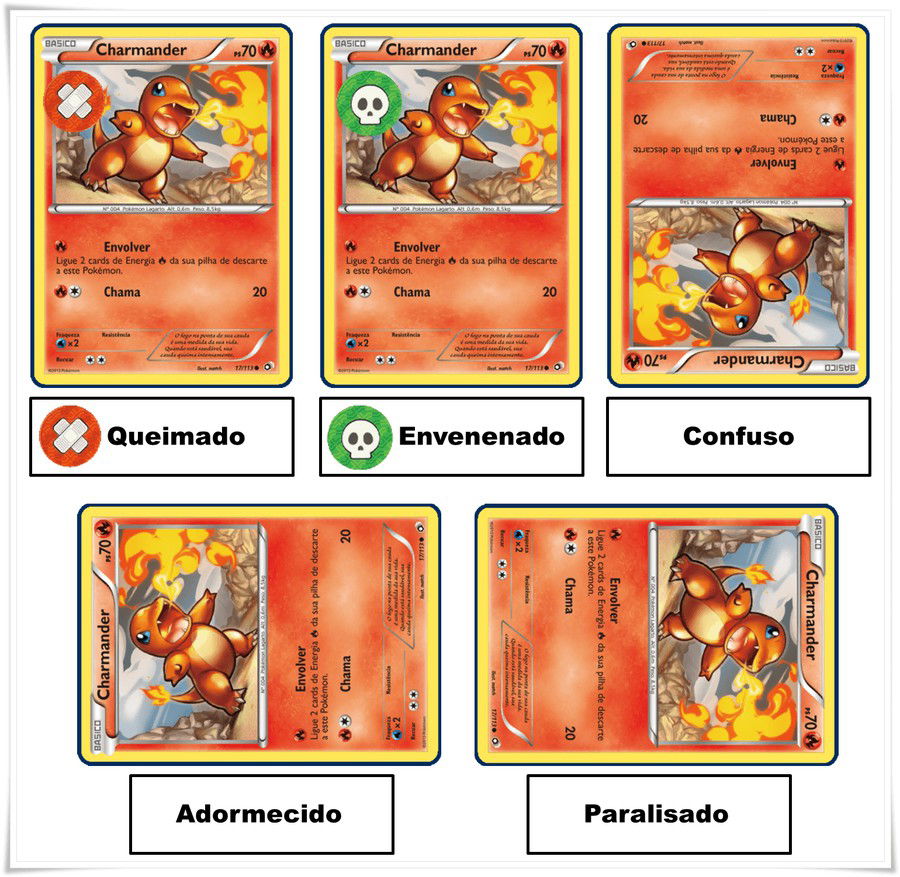
The Power Level: History, Justifications and Why's
These principles are maintained to this day, but the scale of power has changed over the years, and Pokémon from 1999 doesn't have the same destructive power as it does today.
Putting a very practical observation, for example, the strongest cards (I mean direct and massive raw damage at the time), considering the Base Set, were Charizard BS 4 and Zapdos BS 16, where both dealt 100 damage, but realize that they were 4 energies and always with a type of cost, a setback: for Charizard, it was necessary to discard two energies to perform the attack's effect (that's because if you were going to go into the explanation of the skill that it converts any energy attached to it into a fire energy, that is, you circumvented the effect of Double Colorless Energy BS 96 to become two fire energies) and not to mention that at that time there were no energy accelerators for the fire archetype; and Zapdos needed to discard all energy to deal 100 damage.
However, if you compare it to today's cards, we have for example a Charizard VSTAR BRS 18 hitting with its VStar attack Star Blaze for 320 damage for 4 energies (F)(F)(F)(C), discarding two energies in the process, or the Charizard VMAX DAA 20 that by its attack G-Max Wildfire deals 300 damage for 5 energies (F)(F)(F)(C)( C), discarding two energies attached to it.

For almost 20+ years there has been a very abrupt power scale where certain expansions cannot be played anymore and there has been an organization of game procedure types such as Expanded, Legacy formats and of course, Standard (which we focus on in this guide), with the idea of having this balance and fairer game organization.
Ad
So, let's start by talking about the current block, Sword/Shield.
Sword/Shield: current TCG block for Standard
This block alludes to England, as well as the Pokémon regions allude to other parts of the world, with Kanto, Johto, Hoenn and Sinnoh referring to the main areas of the islands of Japan; Unova related to the United States (mainly taking New York City in an aesthetic sense); Kalos related to France; Alola to Hawaii.
And of course, the TCG follows the releases based on the games, that is, if a game comes out for a Nintendo platform, be sure that the TCG will resemble it in some way.
And within the base game, we had the issue of presentations of the region's legendary Pokémon, the dogs Zacian and Zamazenta, who would face the local evil, the feared dragon Eternatus, with the mechanics presented for Gigantamax and Dynamax — not to mention the DLCs: The Crown Thundra and The Isle of Armor, with the presentations of Ice Rider and Shadow Rider Calyrex and the Urshifu with their combat styles Ichigeki (Single Strike/Decisive Strike) and Rengeki (Rapid Strike/Fluid Strike), characteristics that were reflected also in the Trading Card Game.
Pokémon-V: the new mechanic
These Pokémon are the equivalent of replacing the Pokémon-GX in the past block of Sun/Moon, as Sword/Shield entered 2019 in Japan and 2020 in the rest of the world.
But, unlike Pokémon-GX (which respected the hierarchy of evolution, that is, if it had a Charizard-GX BUS 20, it would need to respect its previous evolutionary line: Charmander and Charmeleon), Pokémon-V they practically “copied” the mechanics established in Black/White, where Pokémon-EX were the predominant ones of the format as the “ultra rares” of the time, but with the proposal exercised in the X/Y block, which were the predominant ones with this mechanic emphasizing precisely X/Y, where those Pokémon that would be considered evolutions (either “stage 1” or “stage 2”) were treated as basic, for example Blaziken-EX PR-XY XY54, Swampert-EX PR-XY XY55 and Sceptile-EX PR-XY XY53, because of the Mega Evolution mechanics.
“Rodrigo, this is a little confusing for me. I still don’t understand this historical question.”
I'll be as immersive and as didactic as possible: this "Rule Box" mechanic, which says that "if this ultra-rare Pokemon is KO'd, you can take two prize cards", essentially came out of the block Ruby/Sapphire, back in 2003, but back then, Pokémon in this class had two characteristics:
1) They were treated like Pokémon ex;
2) Respected the evolution hierarchy, that is, if you had a Charizard ex RG 105, you needed to respect the evolutionary line of Charmander > Charmeleon > Charizard ex.
From this block (Ruby/Sapphire) that the concept of "Rule Box" emerged, however, with each block, the nomenclatures and suffixes of these Pokémon changed for each new block. So back: in the Sun/Moon block, Pokémon-GX copied the essence of Ruby/Sapphire's "Pokémon ex".
But, the Pokémon-V of this current block of Sword/Shield copied the concept of the "Pokémon-EX" that the Pokémon that were treated as evolutions are mostly considered as "basic" and their Dynamax or Gigantamax forms as "evolutions", practically the same mechanics of the "Mega Evolutions". Making a quick parallel:
Ad
Example:
X/Y Block:
We have the Charizard-EX PR-XY XY17 as a base and its “evolution”, the M Charizard-EX FLF 107.
Sword/Shield Block:
We have the Charizard V DAA 19 as a base and its “evolution”, the Charizard VMAX DAA 20
Now having clarified about the comparison, let's analyze the types of Pokémon-V.
Pokémon-V: Card Variations
As already described in the topic above, talking about the cards with this ‘’Rule Box’, let’s break down their pros and cons.
Pros: These are cards that have a considerably high HP and have more durability in game time, with high destructive and massive power than the common cards, the so-called "Pokémon Baby", for being more practical to play and with ease of response.
Cons: If knocked out, within the rules of Pokémon with this "Rule Box", you get prize cards more than conventional as it would be with the "Pokémon baby", which would be a prize. In this, if you knock out a Pokémon-V, you get two prize cards, with 1/3 of your prize cards being speeded up. There are other types of V cards, which we will cover here below.
Pokémon V Rules

These are usually the basic Pokémon in the game. We have as an example Zacian V SSH 138 and Zamazenta V SSH 139 as the representatives of the dogs that will face the dragon Eternatus V DAA 116. All of them are considered basic, as are Venusaur V PR-SW SWSH100, Charizard V DAA 19 and Blastoise V PR-SW SWSH101. And of course, if they are knocked out, the opponent takes two prize cards.
Pokémon VMax Rules

This mechanic is basically a mixture of the concepts of the "Mega Evolutions" of X/Y, with the "M" cards, such as M Rayquaza-EX ROS 76 (of course, without losing your turn like Mega Evolutions) with very high health, in the range of 300 and up to 340, with massive attacks, and with the “Rule Box” punishment that if a VMax-type Pokémon is knocked out, you get three prize cards, copying also what was established with the Pokémon-GX Tag Team, such as Reshiram & Charizard-GX UNB 20 and Pikachu & Zekrom-GX TEU 33.
So Pokémon like Eternatus VMAX DAA 117, Venusaur VMAX PR-SW SWSH102, Charizard VMAX DAA 20 and Blastoise VMAX PR-SW SWSH103 have high destructive power (as said), but if knocked out, the opponent takes three prize cards.
Note: Some cards have their peculiarities with names such as "Dynamax" and "Gigantamax", but this does not interfere with the game itself, it is just an adjective to them because the Pokémon that grow with the effect of Eternatus' energy, if the Pokémon changes their physiognomy (like the Kanto trio), they have the rank of "Gigantamax".
However, if the Pokémon only "grows", for example the card Gardevoir VMAX CPA 17, these cards are rated "Dynamax". And of course, Eternatus is an exception, as he is the precursor of this energy with its own title: “Eternamax”.
Ad
Pokémon VStar Rules

Being a "Pokémon Enhancement" as an evolution, along the same lines similar to "Mega Evolution", as mentioned above with the Pokémon-VMax, they have their HP slightly shortened in the range of 270 to 280, being similar to the HP that the Pokémon-GX Tag Team had in the Sun/Moon block.
They have damage as good as a VMax and can still apply skills and attacks of the category called "VStar", that is, being able to perform them only once per match.
Assuming your deck has two Pokémon-VStar, like a Arceus VSTAR BRS 123 and Charizard VSTAR BRS 18, respectively Arceus with the VStar ability “Starbirth” and Charizard with the VStar attack “Star” Blaze", you can't use both in the same game! You need to choose between Arceus's ability or Charizard's attack, so think wisely when and how to use a VStar technique.
And the concept of these VStar attacks and abilities is recycling the concepts of Pokémon-GX attacks from the Sun/Moon era, where it could only be used once per match, also with the same concern of when and where and how to use at the appropriate time.
And with a certain advantage of "avoiding damage" by knockouts, these Pokémon with their "Rule Box" offer two prize cards if they are defeated, which makes their deck more flexible for games that don't deliver a Pokémon-VMax face to face to lose three prize cards.
Pokémon V-Union Rules

Affectionately referred to by informal audiences as “Exodia Cards” (referring to Yu-Gi-Oh!), these cards are powerful versions of some Pokémon from the current block that have 4 parts that need to be played in the discard pile in order to be playable. These cards have great destructive powers, high HP (not as much as a VMax) around 300 and 320 and with many abilities, making it greatly absurd, if you consider for example the Greninja V-Union (my favorite by the way), who has three skills!
So far 5 V-Union cards are known: Mewtwo V-Union, Greninja V-Union, Zacian V-Union, Pikachu V-Union and Morpeko V-Union (but this one is only available in Japan, it never came to the West).
But just like VMax cards, if they get KO'd, your opponent takes three prize cards, and you cannot play that type of Pokémon again. It's worth remembering that they don't have their own classification as "Basic Pokémon", so cards like Quick Ball SSH 179 can't fetch those parts, but Ultra Ball BRS 150 can because this particular Item card does not specify the type of Pokémon in the quest.
It is worth remembering that this type of mechanic, too, is not new in the TCG, since in the Heart Gold/Soul Silver block, there were the Legends cards, which were a type of mechanic that could be combined with two parts of it and if it had in hands, could be activated. They had cards like Lugia LEGEND HS 113 – Lugia LEGEND HS 114, Ho-Oh LEGEND HS 111 – Ho-Oh LEGEND HS 112, Rayquaza & Deoxys LEGEND UD 89 – Rayquaza & Deoxys LEGEND UD 90, Darkrai & Cresselia LEGEND TM 99 – Darkrai & Cresselia LEGEND TM 100, Kyogre & Groudon LEGEND UD 87 – Kyogre & Groudon LEGEND UD 88, etc.
Ad
Trainer Cards: Understanding the Mechanics
Just as there was the addition of power in Pokémon cards, the Trainer cards, which support the moves in the game, also suffered the same principles to adjust to this equivalence.
As said, back in the 1996/1999 Base Set (taking expansions beyond such as Jungle, Fossil, Team Rocket, Gym Challenge, Gym Heroes) and even in the Johto era (the Neo Genesis, Neo Discovery, Neo Revelation, Neo Destiny, Legendary Collection) didn't have the Supporter card rating, that is, you could for example play Professor Oak BS 88 (which was the father of the cards we know today in the current format as Professor's Research (Professor Oak) CEL 23) multiple times in the same turn — that is, it could use that same card 4 times in the same turn!
So, when the expansions with E-Cards arrived (cards that had a “bar code” that could be used on the Game Boy Advance with a device that was coupled with the GBA), it was in the Expedition, Aquapolis and Skyridge expansions that came the Supporter card ranking we know which can only be played once during your turn, before attacking.
Now, regarding the Stadium card classification, they have been existing since the 1996/1999 Base Set and there have been no changes.
The Item cards also did not have the distinction of those that were usable or equipment (the so-called Tools). So, like the “Supporter” cards, the Tools cards only had this distinction in the Johto era card block (the Neo Genesis, Neo Discovery, Neo Revelation, Neo Destiny, Legendary Collection expansions) with cards that became iconic and had "reprints" in the future, such as Focus Band N1 86.
So, we're going to approach these cards in the Standard format aspect to understand the recent mechanics.
Trainer Supporter
These cards can only be played once during your turn, before you attack, as per your basic rule. However, in a hypothetical situation where you are starting the first round, being the first to play, you cannot play any Supporter/Supporter cards, but if you are the second to play (within the first round), you can play that type of card. This rule changed in the Sword/Shield block, since in the previous block, Sun/Moon, even though you were the first to play in the first round, you could play these cards such as Lillie SUM 122, which had the effect draw cards in your hand until you have 6, but if it was your first turn as a player, you would draw 8 instead of 6.
Of course, there are Supporters that circumvent this rule, like Beauty VIV 148, for example. But other than that, one cannot escape this generalized rule.
Trainer Item
These cards are played as many times as you like before attacking and have no usage limit. They are basically categorized into two types:
1) Item: these are usable cards such as Quick Ball SSH 179, Ultra Ball BRS 150, Potion CPA 61, Hyper Potion SSH 166, Cross Switcher FST 230.
2) Tooll: these are cards that give some benefit to the Pokémon if it is attached to the card, being free retreat, damage increase, opponent's tool inhibition, health recovery, etc., such as Air Balloon SSH 156 , Choice Belt BRS 135, Single Strike Scroll of Scorn BST 133, Rapid Strike Scroll of Swirls BST 131, Tool Jammer BST 136 and Lum Berry SSH 168.
Ad
Trainer Stadium
These are cards that can be played as an “intervention area”, similar to the “Fields” in Yu-Gi-Oh!.
The effects of this Stadium can favor me or the opponent, or both, or even harm either, or both (depending on your strategy), having numerous types of them with different effects, such as Tower of Waters BST 138, Tower of Darkness BST 137, Old Cemetery CRE 147, Path to the Peak CRE 148, Magma Basin BRS 144 or Training Court RCL 169.
Energies
The simplest of all explanations, classified into two types: basic energies and special energies.
The basic ones, you can have as many as you want in the deck, without limits. But for special energies, only 4 copies of each name, that is, for example, can only have a maximum of 4 copies of Double Turbo Energy BRS 151, 4 copies of Twin Energy RCL 174 and 4 copies of Capture Energy RCL 171 in a single deck (of course, you can flex the amount by doing 3-2-2; 4-1-1; 2-2-2; and so on).
Conclusions
That said, I hope that these more didactic and detailed tips and rules I've written have helped you to clear up some doubts and make it easier for you to build decks when entering the world of TCG.
Until the next time!
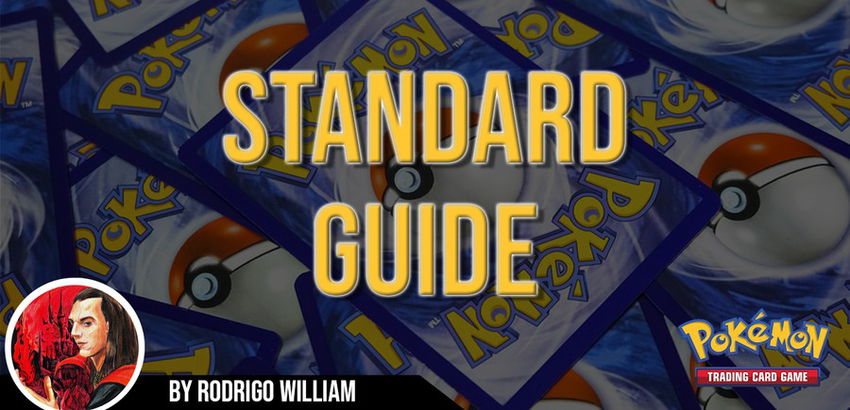



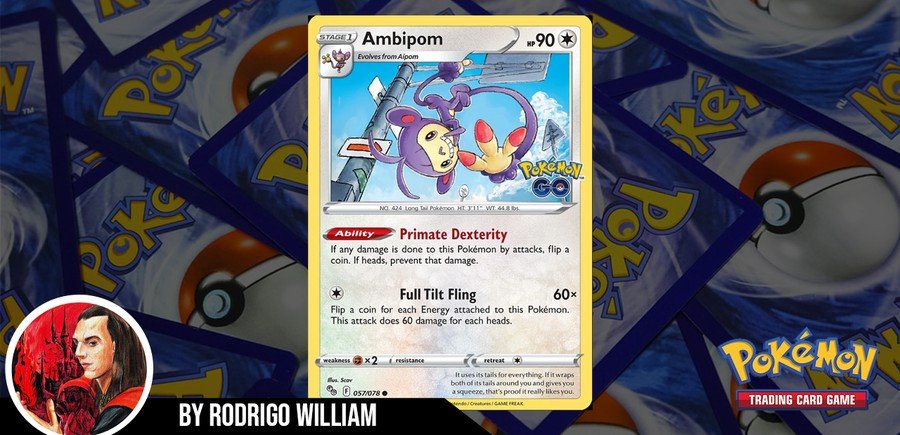
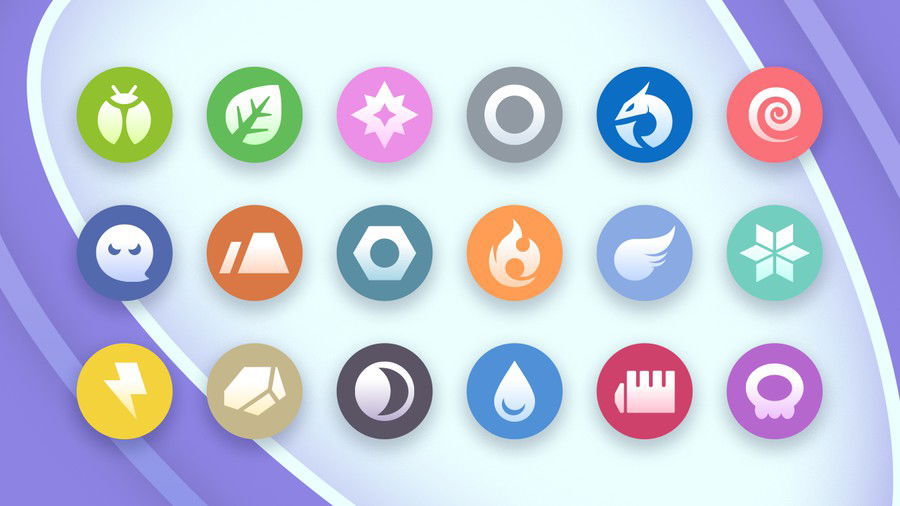

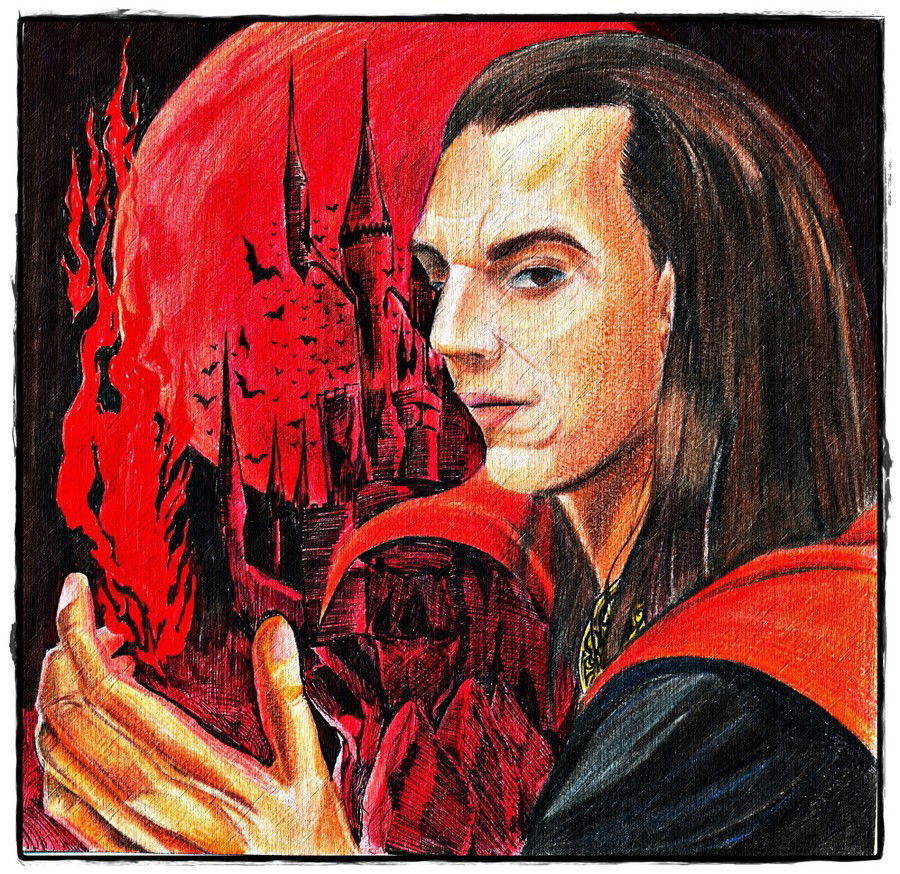

— Kommentare0
Sei der erste der kommentiert